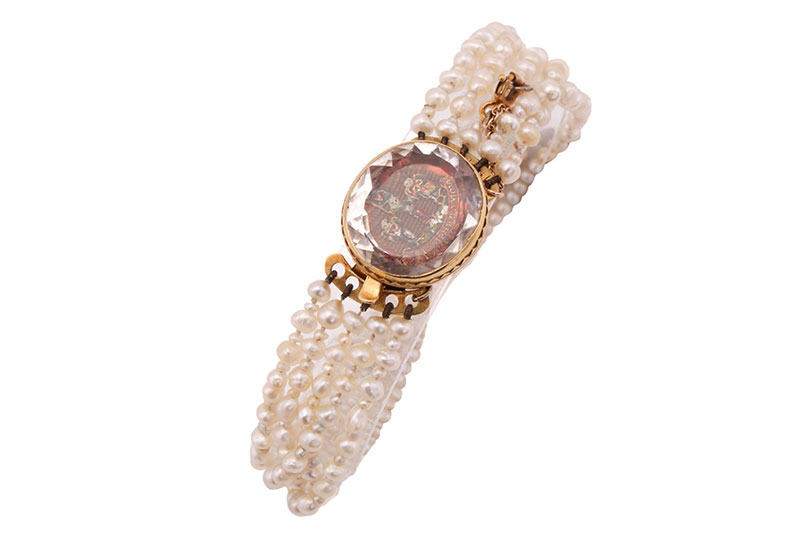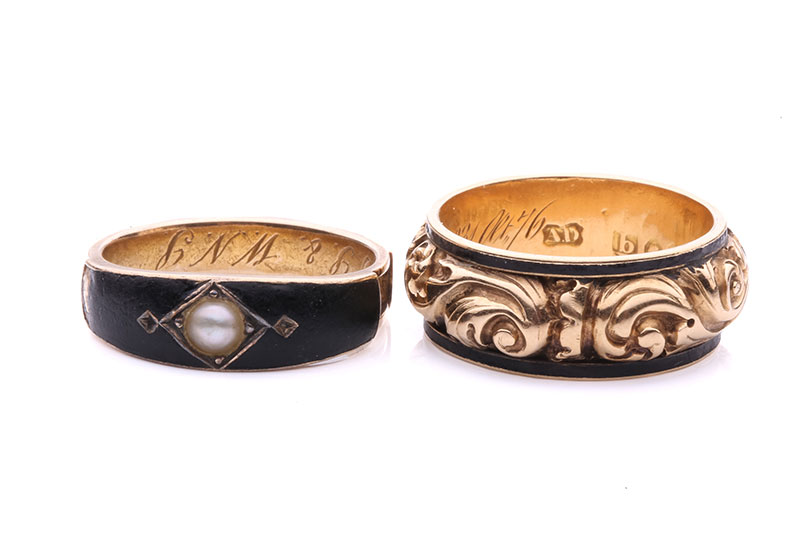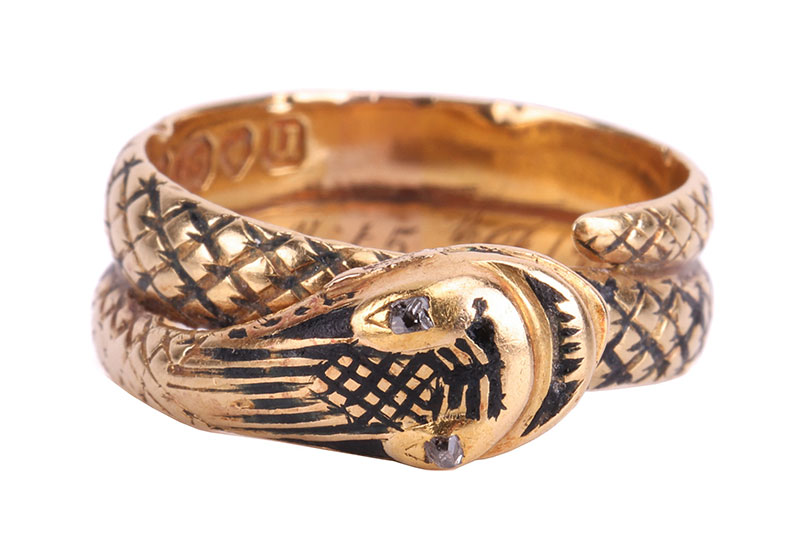What is Mourning Jewellery?
Under the reign of Queen Victoria, mourning jewellery flourished as the queen grieved her husband
04/07/2025
Mourning jewellery was created to commemorate the deceased and serve as a tangible memento for the living. It gained prominence during the 17th century and reached its peak during the Victorian era, when mourning rituals were strictly observed and public displays of grief were common and, indeed, expected.
Mourning jewellery first appeared in the 1600s. It was often crafted from materials like gold and enamel and adorned with symbols of mortality and the inevitable passage of life, such as skulls, coffins, and hourglasses. These early pieces were both a tribute to the departed and a reminder of the brevity of life, with lettering in the Latin' Memento Mori' (remember you will die) or similar, such as 'Prepared be to follow me'.
An early 18th century five strand natural pearl, mourning bracelet
During the Victorian era, under the reign of Queen Victoria, mourning jewellery flourished as the queen grieved her beloved husband, Prince Albert. She wore black clothing and mourning jewellery for the rest of her life, which sparked a fashion for the aesthetic, which was reflected in the art and literature of the time. This period saw the creation of intricate pieces featuring motifs like weeping willows (symbol of sorrow and mourning), urns (representing the physical remains of the deceased), and angels (protection and the ascent to heaven). Hairwork, where the hair of the deceased was intricately woven into designs and encased in lockets or brooches, became particularly popular, as the jewellery could lie close to the wearer's heart. Enamel was often used and commonly symbolised as a remembrance of a married person in black enamel and a remembrance of an unmarried person or a child in white.
The use of jet, a type of fossilised wood, and black vulcanite, a hard rubber product, also became widespread, as the dark black perfectly aligned with the sombre mood required of the mourning period. Today, mourning jewellery is still made using human hair, although incorporating the deceased's ashes is also common practice.
Two 19th-century mourning rings
However, the aesthetic of antique pieces is reflected in the jewellery design of fashion houses like Alexander McQueen, with elaborate and gothic references throughout collections, which makes mourning jewellery wearable and desirable today.
Whilst some might regard mourning jewellery as rather macabre, the pieces offer a glimpse into past customs, beliefs, and societal norms. Each piece tells a story of personal loss and collective mourning practices.
The similarity between many pieces suggests that jeweller's catalogues were available for the mourners to select standard motifs and personalise with portraiture and engraving. However, this also means few pieces are identical. This rarity makes them highly desirable to collectors seeking to add distinctive items to their collections, and there is an eager global market for unusual pieces.
William IV mourning ring for Francis Basset
If you are considering selling any mourning jewellery, here at Dawsons, our highly skilled and gemmology qualified team of jewellery experts would be delighted to confidentially assess and accurately value your mourning pieces. Once consigned to auction, our in-house marketing team will present your jewellery to a huge global audience of potential buyers. This exposure will ensure that bidding is competitive and that maximum prices can be achieved at auction.
RELATED ARTICLES
What is Etruscan Revival Jewellery?
Where is The Best Place to Sell Antique Jewellery?
How do You Identify Art Nouveau Jewellery?
Are you thinking of selling any mourning jewellery?
With access to a huge global audience of known bidders, Dawsons can secure the highest prices.
Get in touch with an expert Valuer today for confidential sales advice, we would be delighted to help you:


